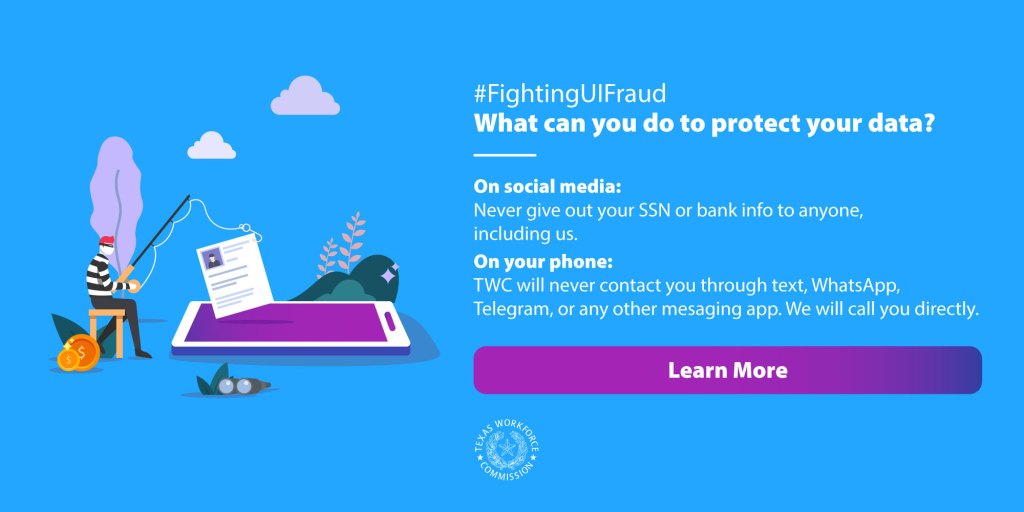No matter where you are in your career, training can benefit you. Training can be the first step towards your dream career, it can be used to upskill you to higher-pay and more responsibility within the job you have, or it can be used to qualify you for one of the many middle skills positions that are in high demand with Texas employers across the state. These are jobs that require only very short-term training or education but can connect Texans to a lifetime of increased career potential and earnings.
For employers, training is a crucial element for staff development and retention as it allows you to upskill your workers to meet the needs of your company while simultaneously showing that you value the progress of their careers within your organization.
Whatever training you may want or need, TWC is here to help and your area Workforce Solutions Office is an excellent resource for finding local opportunities.
Innovation in Training
Training needs to be flexible and shift to meet the needs of not only the employer, but workers too. For example, with the widening middle skills gap, we need to encourage programs to explore creative, new approaches to training that can lead to faster credentials for workers. Providing targeted, short-term training in the most in-demand industries quickly provides employers with a talented pool of qualified workers.
The Texas Talent Connection Grant Program, funded by Wagner-Peyser 7(b) federal funds, is one tool Texas uses to encourage innovation in workforce development with an emphasis on training that leads to job placement, increased wages, and job retention; stresses efficiency and innovation in training; and is inclusive for those with special needs.
These grants encourage businesses to take advantage of skilled Texans in their area who are eager to learn in-demand skills for higher-paying jobs and career advancement.
The TWC is responsible for processes related to Texas Talent Connection grant award negotiation, funding, management, and monitoring.
“The right training can truly change someone’s life and put them on the road towards a rewarding career,” said TWC Commissioner Representing Labor Julian Alvarez. “The TWC remains committed to supporting programs that think outside the box to help Texas’ dedicated workers remain the most sought after in the world.”

Training to Tackle the Middle Skills Gap
Recently, TWC earmarked up to $9 million in grant funding for job creation, job preparedness, and job progression activities to help put more Texas workers on a path to a career in a rewarding middle skills job. Eligible activities under the initiative include: a career pathways app for students and job seekers, one-on-one job coaching, training and certifications in high demand occupations, and a mobile credential tracker. Furthermore, the agency will leverage new and existing programs to optimize participation of foster youth and people with disabilities.
The initiative to end the middle skills gap builds on existing TWC programs and services, which are available to all Texans through https://www.twc.texas.gov/ or through 180 Workforce Solutions Centers around the state.
Different Paths for Job and Skills Training
There are many different ways to get job and skills training. Here are some more programs that promote training for workforce development:
- Skills Development Fund – The Skills Development Fund grant program supports customized job skills training for incumbent and new employees in collaboration with Texas public community and technical colleges and local employers. Some of the Skills Development Funds are leveraged to support dual-credit high school and college career and technical education programs, and training for veterans transitioning to civilian life. Training provided advances the skills of existing workers and creates new job opportunities.
- Apprenticeships – Apprenticeship combines paid on-the-job training under the supervision of experienced journey workers with related classroom instruction. Most registered apprenticeship training programs last from three to five years as determined by industry standards.
- Jobs and Education for Texans – The Jobs and Education for Texans (JET) grant program exists to assist public community, state and technical colleges, and ISDs with purchasing and installing equipment necessary for the development of career and technical education courses or programs that lead to a license, certificate or postsecondary degree in a high-demand occupation.
- High Demand Job Training – The High Demand Job Training (HDJT) program supports Boards’ partnership with local EDCs as a way to leverage local economic development sales taxes for high-demand job training. Boards collaborate with local EDCs and match their local economic development sales tax funds to jointly support the provision of such training.
- Texas Industry Partnership Program – The Texas Industry Partnership program supports collaborations between local workforce development boards and industry partners through the leveraging of matching contributions of cash or qualifying expenditures for occupational job training.
- Self Sufficiency Fund – The Self-Sufficiency Fund grant program provides training for adult recipients of Temporary Assistance for Needy Families (TANF), Supplemental Nutritional Assistance Program (SNAP) or individuals at risk of becoming dependent on public assistance. The Self Sufficiency Fund provides training grants for industry recognized certificates and credentials that lead to permanent full-time employment.
- Skills for Small Businesses – The Skills for Small Business program supports collaborations between Workforce Solutions partners and small businesses. This initiative provides state-funded training to businesses to meet their needs, with an emphasis on training new workers or upgrading skills of incumbent workers.
Employers and job seekers alike can leverage the benefits of these programs. To find out about training opportunities in your area contact your local Workforce Solutions Office!
Team Effort
From the Governor’s Office and the Texas Legislature to TWC working with local Workforce Solutions Offices, educators, and Economic Development Corporations, we are committed to training the workforce of Texas to not only meet the needs of our world class employers, but also putting Texans on the path to life-changing careers. Careers aren’t one-size fits all, so why should training be? TWC and our partners strive to make sure training is not only useful, but flexible, nimble, and open to innovation.











